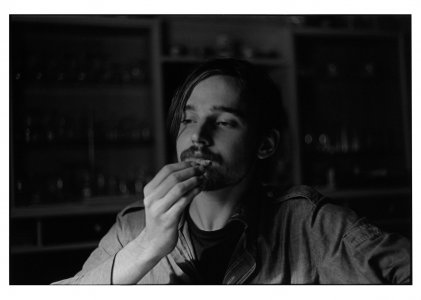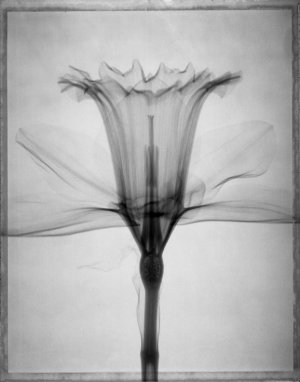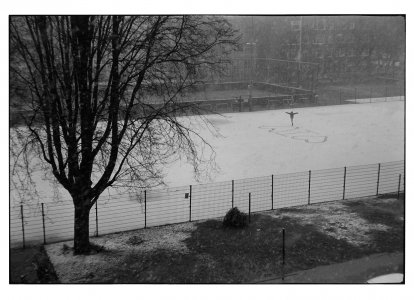Erik van Straten
Mentor
This picture is taken with Hermans' own Elmarit 21mm f2.8. I've never owned a 21mm myself.
gelatin silver print (elmarit 21mm f2.8) leica m3
https://www.flickr.com/photos/erik_v...69320/sizes/l/
Erik.
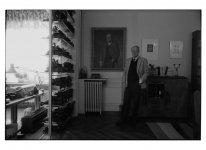
gelatin silver print (elmarit 21mm f2.8) leica m3
https://www.flickr.com/photos/erik_v...69320/sizes/l/
Erik.

Out to Lunch
Menteur
A copy of his book "Koningin Eénoog" is on sale at Etsy and there are a few nice image examples shown.
I like this one:
Mamiya 645?
Thanks for posting. Cheers, OtL
Erik van Straten
Mentor
Thank you, Marty!Beautiful. When was this taken Erik? I know you mentioned that you abandoned Tri-X some time ago.
Do you re-print your old photos sometimes? I admit to having printed some of my favourites where I did not have prints that I found entirely satisfactory several times, as my methods and materials changed. My main bugbear with modern vc papers is that highlight contrast is too low for some old negs or negs on old tech materials. Current Ilford fb vc is better than the previous one but nothing available now is as good as Forte, Sterling or Cachet papers were. So I print them on current papers with inkjet masks that differentially influence the contrast on vc paper, or manage the differences in density on graded paper. Sometimes they still need the highlights bleached.
Marty
It is printed on Ilford MGFB white glossy. I have nothing to complain about this paper, only that it became very expensive.
I think my printing method is different from yours. I always make split grade prints. For the split grade printer the paper can't be soft enough with filter 00. Ilford MGFB is excellent for that purpose. Ilford MGFB is the only truly high quality paper on the market now.
It seems there will be soon a return of Adox MCC110. Maybe that will lower the price a bit, but the professional printing world will continue working with Ilford MGFB because it is simply the best.
Yes, I have been reprinting all my pictures.
I started with photography in 1969. My materials and my enlager (Focomat llc) are much better than they were back then. Then I had only an Opemus lla and single grade Agfa Brovira paper.
gelatin silver print (nikkor h 50mm f2) nikkormat ftn
New Years Eve, Utrecht, 1971
Erik.
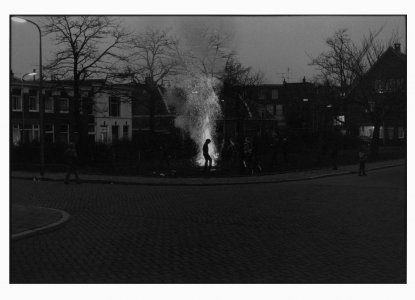
Last edited:
Harry the K
Established
Now, as Bergger Variable VC Warmtone has become even more expensive than Ilford MGFB , I ordered a package of Ilford. Working side by side, I cannot tell the difference between this two papers, the results look very much the same. Both glossy and airdried.
Besides, it´s wonderful to view the old negs and reprint them. First for the memories and then for the printing style one has deleloped and improved over the years.
Besides, it´s wonderful to view the old negs and reprint them. First for the memories and then for the printing style one has deleloped and improved over the years.
Erik van Straten
Mentor
Hans Berkhout
Well-known
Erik and OTL here is anoter WFHermans detail: he learned darkroom work from a.o. Nico Jesse. (creator of " Vrouwen van Parijs" and much more).
Last edited:
Erik van Straten
Mentor
Yes, I know this, my father had the books "Vrouwen van Parijs" en "Vrouwen van Frankrijk"; I loved those books, high quality B+W photography and printing. They were published by Bruna and edited by André Maurais, if I remember well. Beautiful typical French copper gravure.Erik and OTL here is anoter WFHermans detail: he learned darkroom work from a.o. Nico Jesse. (creator of " Vrouwen van Parijs" and much more).
Hermans worked for a while in the darkroom of Nico Jesse as a volunteer.
Erik.
Last edited:
Hans Berkhout
Well-known
I just noticed this about WFH: Rather important photos
Erik van Straten
Mentor
20 Aug — 08 Jan 2023 ?????????????????????????????
Very unclear message from the fotomuseum.
Erik.
Very unclear message from the fotomuseum.
Erik.
Last edited:
Hans Berkhout
Well-known
internet can lead to unpleasant surprises.
however, try to google "Rather important Photos WFHermans"
however, try to google "Rather important Photos WFHermans"
Erik van Straten
Mentor
Correction post 127: André Maurais, read: André Maurois.
x-ray
Mentor
This is a photograph and was made without a camera.Photographing without a camera is impossible, but there are much better alternatives for digital printers.
Erik.
Attachments
x-ray
Mentor
I used Ilford MGFB and Agfa 110 for years and still have about 400 sheets of Agfa in the freezer along with a couple hundred sheets of Ilford MGFB. I think I still have a stash of 11x14 Forte Poly Warmtone + FB, stunning paper.Now, as Bergger Variable VC Warmtone has become even more expensive than Ilford MGFB , I ordered a package of Ilford. Working side by side, I cannot tell the difference between this two papers, the results look very much the same. Both glossy and airdried.
Besides, it´s wonderful to view the old negs and reprint them. First for the memories and then for the printing style one has deleloped and improved over the years.
More recently when Bergger warm tone FB was introduced I tried it and have adopted it as my go to paper. What I like about it, there’s almost no dry down, just a very tiny bit. I like the color in LPD and it takes a very nice archival selenium tone without a color change. I also like the surface much better.
I have no issues with Ilford and will use it from time to time. I haven’t looked but Foma made some very nice but verr slow papers. Nothing wrong with slow as I like a print time com 15-30 seconds. Any longer gets tiring as I burn and dodge quite a lot.
I go back to the days of Ansco Indigo and DuPont Varigam and Varilour. Varilour was my favorite paper in the 60’s and into the 70’s until they stopped making it.
As to dodging and burning small prints, no issue. I have been dodging and burning 5x5 prints for decades with excellent success. I used to tell students I very rarely see a negative that prints straight and most prints can be enhanced with dodging and burning.
Last edited:
Erik van Straten
Mentor
I never dodge and burn, but I make split grade prints and then dodging and burning is not necessary. But this discussion was here before. Most people don't know what split grade printing is, btw.As to dodging and burning small prints, no issue. I have been dodging and burning 5x5 prints for decades with excellent success. I used to tell students I very rarely see a negative that prints straight and most prints can be enhanced with dodging and burning.
The big advantage of split grade printing is that you can easily make several exactly equal prints. Dodging and burning is fine, but but costs a lot of time and paper and therefore money. The photo paper has become almost unaffordable.
Erik.
Erik van Straten
Mentor
Dralowid
Michael
I didn't notice at first, did he collect Oliver typewriters?This picture is taken with Hermans' own Elmarit 21mm f2.8. I've never owned a 21mm myself.
gelatin silver print (elmarit 21mm f2.8) leica m3
https://www.flickr.com/photos/erik_v...69320/sizes/l/
Erik.
View attachment 4811085
brusby
Well-known
For people who have some experience printing, dodging and burning can be quite economical. When I was doing it professionally it rarely took more than two sheets of paper, and often only one. Here's an example of Robin Bell printing a new negative using dodging and burning. His first print is decent, but he makes minor refinements on the second to achieve his finished print. It's almost exactly the way the other two photographers and I printed when I was working at the architectural/commercial photo firm many years ago, except I'd use a couple of L shaped pieces of black poster board for dodging and burning in addition just to using my hands as Robin is shown doing in this video. Opposing L shaped boards allowed for making even finer adjustments than hands alone.I never dodge and burn . . . Dodging and burning is fine, but but costs a lot of time and paper and therefore money. The photo paper has become almost unaffordable.
His printing segment starts about 33:33
Erik van Straten
Mentor
He collected all type of typewriters, but mostly old ones. I do not know anything about typewriters. I also don't know what became of his collection.I didn't notice at first, did he collect Oliver typewriters?
Erik.
Erik van Straten
Mentor
For people who have some experience printing, dodging and burning can be quite economical. When I was doing it professionally it rarely took more than two sheets of paper, and often only one. Here's an example of Robin Bell printing a new negative using dodging and burning. His first print is decent, but he makes minor refinements on the second to achieve his finished print. It's almost exactly the way the other two photographers and I printed when I was working at the architectural/commercial photo firm many years ago, except I'd use a couple of L shaped pieces of black poster board for dodging and burning in addition just to using my hands as Robin is shown doing in this video. Opposing L shaped boards allowed for making even finer adjustments than hands alone.
His printing segment starts about 33:33
In the past there was no VC paper, so printers used their burn and dodge abilities. Now there is split grade printing wich is much more economical and much more effective. Moreover, in split grade printing one can burn and dodge as much as one wants. The problem, of course, is that burning and dodging is never exactly repeatable.
Erik.
Out to Lunch
Menteur
Share:
-
This site uses cookies to help personalise content, tailor your experience and to keep you logged in if you register.
By continuing to use this site, you are consenting to our use of cookies.


